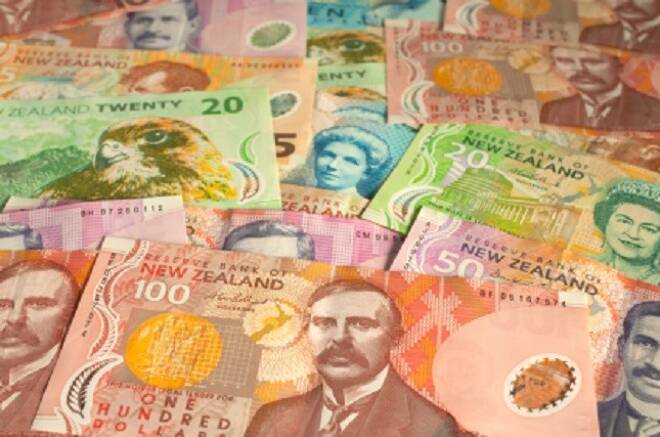Advertisement
Advertisement
Notion of Overvalued Greenback Helps Boost New Zealand Dollar
By:
An overvalued U.S. Dollar along with positive comments from Reserve Bank of New Zealand Governor Graeme Wheeler helped boost the New Zealand Dollar last
An overvalued U.S. Dollar along with positive comments from Reserve Bank of New Zealand Governor Graeme Wheeler helped boost the New Zealand Dollar last week.
The week began with the U.S. Dollar at a multiple year high against a basket of currencies on strong expectations of a Fed rate hike in December. Since this news was essentially priced into the market, investors questioned the Greenback’s value and its ability to sustain the rally.
The NZD/USD closed at .7134, up 0.0096 or +1.37%.
Early in the week, the latest Reserve Bank of New Zealand (RBNZ) Financial Stability report continued to express concerns surrounding the housing sector. According to the RBNZ, there is significant risk of further upward pressure on house prices so long as the imbalance between housing demand and supply remains.
The RBNZ also expressed some concerns over the dairy sector. According to the central bank, the increase in prices over recent months should return the sector to profitability, but the increase in debt build up over the past two years leave the sector vulnerable to futures shocks.
Reserve Bank Governor Graeme Wheeler said in a speech he expects consumer inflation to move back within its target as soon as December, a sign that record low interest rates were beginning to have their desired effect.
Australian Dollar
The Australian Dollar managed to scratch out a small gain last week as investors reacted to domestic data, a surge in crude oil prices and U.S. economic data. The AUD/USD finished the week at .7450, up 0.0018 or +0.25%.
Domestically, helping to support the Aussie were Private Sector Credit, which increased 0.5%, and the AIG Manufacturing Index, which came in at 54.2, better than the previous 50.9.
Another report showed Commodity Prices (y/y) surged 32.1%, up from the previous 15.3%. Finally, Retail Sales came in at 0.5%, better than the 0.3% estimate, but below the previous 0.6%.
On the negative side, Building Approvals fell 12.6%. Last month they were down 9.3%. Private Capital Expenditure fell 4.0%, more than the 2.8% estimate, but better than the previous 5.2%.
Japanese Yen
There were no major reports out of Japan last week. Traders primarily reacted to the direction of U.S. Treasury yields and the equity markets. The USD/JPY closed at 113.467, up 0.288 or +0.25%. Although the Forex pair managed to eke out a small gain on the weekly chart, there was evidence on the daily chart of sellers.
Domestically, Japanese Household Spending, Retail Sales and Housing Starts all beat their estimates, but were not necessarily stellar performers. Capital Spending and the Monetary Base report were weak.
Rising U.S. Treasury yields helped support the U.S. Dollar at times as the favorable interest rate differential between U.S. Treasury Bonds and Japanese Government Bonds continued to widen.
Weakening U.S. equity indices helped drive up the Japanese Yen periodically because of carry trade.
U.S. Dollar Index
December U.S. Dollar Index futures closed at 100.861, down 0.685 or -0.67%. There was no follow-through to the upside following the previous week’s surge to a multi-year high. This price action suggests an overbought market.
On the data front, Preliminary GDP for the third quarter came in better-than-expected at 3.2%. The forecast called for a 3.0% increase. The previous read was 2.9%.
U.S. Consumer Confidence topped the 101.3 estimate with a 107.1 reading. The previous reading was 100.8.
ISM Manufacturing PMI was stronger than expected at 53.2, beating both the previous reading and the forecast.
The U.S. Non-Farm Payrolls report was mixed. The headline number came in at 178K, meeting expectations. The Unemployment Rate was 4.6%, well below the previous read of 4.9%. Average Hourly Earnings were lower by 0.1%.
The slew of data likely means the economy has the strength to warrant a rate hike by the Fed in December. However, the mixed jobs data indicates that the number of rate hikes in 2017 may be limited.
About the Author
James Hyerczykauthor
James is a Florida-based technical analyst, market researcher, educator and trader with 35+ years of experience. He is an expert in the area of patterns, price and time analysis as it applies to futures, Forex, and stocks.
Did you find this article useful?
Latest news and analysis
Advertisement
